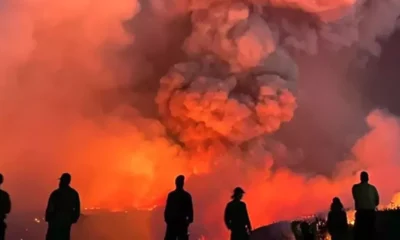AIA
Time to Take Down the Arizona Interscholastic Association: A Call for Change

By Arman Sidhu |
The Arizona high school sports landscape is undergoing significant change, and at the center of this transformation is the Arizona Interscholastic Association (AIA), an organization criticized for its outdated practices and monopolistic tendencies. Once closely aligned with influential educational bodies like the Arizona School Administrators, the Arizona School Board Association, and the Arizona Educators Association, the AIA now reflects an authoritarian stance detrimental to student-athletes and their families.
As alternatives like Canyon Athletic Association (CAA) gain traction, the AIA faces an identity crisis. Instead of adapting, the organization has tightened its grip through draconian policies, often punishing athletes and coaches. Legal experts have emerged in Arizona solely to address conflicts with the AIA, a troubling trend for an organization that claims to represent the interests of young athletes.
The detrimental impact of AIA’s rigid policies is exemplified by incidents at Desert Edge High School, where a single social media post resulted in severe penalties, barring the football and track teams from playoffs. This incident exposes the AIA’s punitive enforcement of rules, which seemingly aim to quell any challenge to its authority.
Another case involving the Williams Field High School boys’ volleyball team highlights similar concerns. After self-reporting an unsanctioned scrimmage, the AIA not only dismissed their championship title but also allowed them to compete only under the threat of legal action. This pattern of behavior raises questions about the AIA’s priorities—championships or control.
Valley Christian High School experienced scrutiny for simply participating in enriching non-AIA activities, which underscores the organization’s overreach. The AIA’s actions suggest a troubling trend of placing bureaucratic interests above the development and well-being of student-athletes.
Financial exploitation compounds these issues, with the AIA monopolizing photography services at state tournaments, limiting access for local media while diverting funds to a select private company. This behavior echoes its initial resistance to allow athletes the rights to their name, image, and likeness, further illustrating misaligned priorities.
Historically, the AIA has either faced accusations or litigations over discriminatory practices, such as a previous ADA lawsuit involving the denial of interpretive services for disabled athletes. These instances reveal a long-standing pattern of prioritizing institutional rules over the equitable treatment of all students.
The AIA’s grip on high school athletics seems increasingly tenuous. The rise of private preparatory institutions and the CAA signifies a shift towards alternatives that emphasize athlete development and individual choice. Should a major school district decide to sever ties with the AIA, the association could quickly lose its relevance and influence.
As families actively seek better opportunities for their children, the AIA must confront the realities of a changing environment. The future of Arizona high school sports may very well depend on whether the AIA reforms its practices or continues on its current path toward obsolescence.
Arman Sidhu is a lifelong Arizonan and a former student-athlete, teacher, coach, athletic director, and principal. His views are solely his own.
















